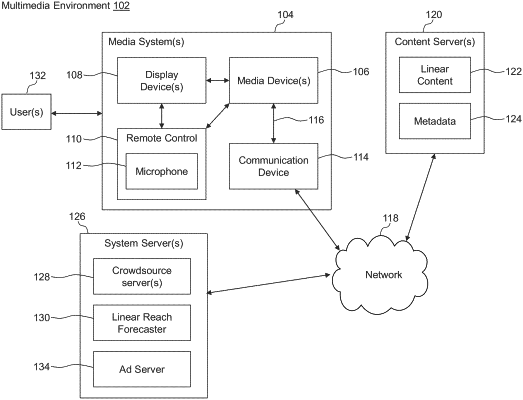| CPC H04N 21/26208 (2013.01) [H04N 21/23424 (2013.01); H04N 21/812 (2013.01)] | 20 Claims |

|
1. A computer-implemented method for determining an optimized content schedule, comprising:
inputting a content schedule into a relationship model, wherein the content schedule is associated with linear content, wherein the linear content is to be delivered to a media device associated with a household, wherein the content schedule comprises a target impression for supplemental content within the linear content, wherein the content schedule is further associated with a content provider, a network channel, and a daypart, and wherein the target impression reflects a number of desired impressions of the supplemental content within the linear content;
outputting, by the relationship model, a number of delivery slots for the target impression, the network channel, and the daypart;
generating an estimated reach based on the number of delivery slots, the network channel, and the daypart;
generating an optimized linear content schedule based on the estimated reach and the content schedule; and
delivering the linear content via the network channel to the media device associated with the household based on the optimized linear content schedule.
|